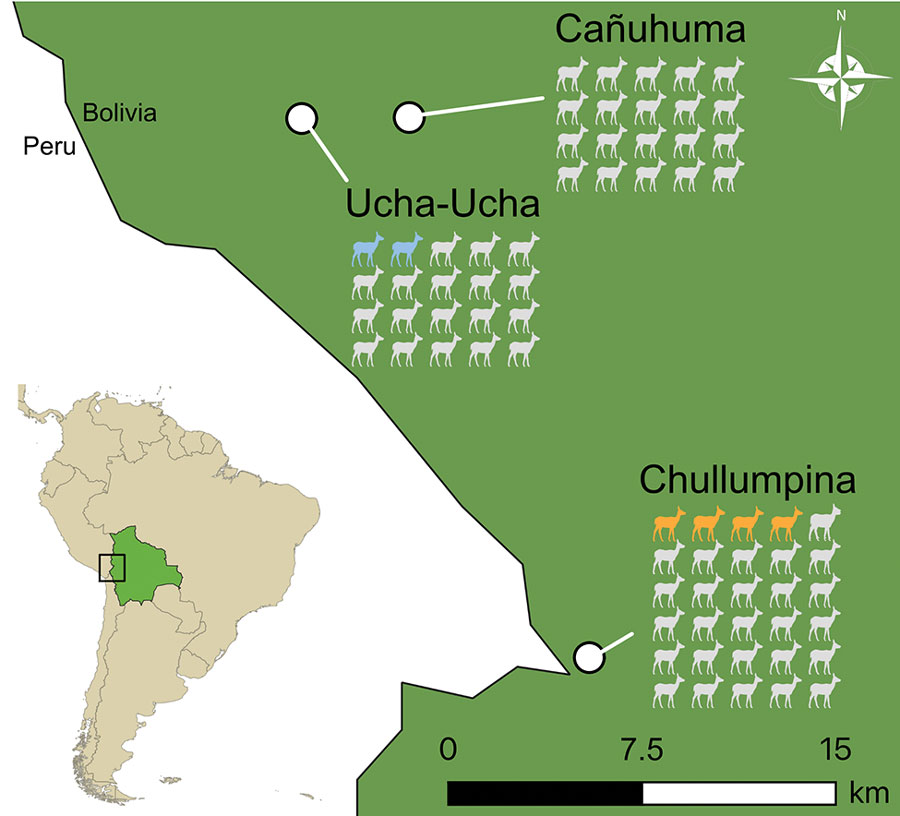Volume 29, Number 12—December 2023
Dispatch
Divergent Genotype of Hepatitis A Virus in Alpacas, Bolivia, 2019
Figure 1

Figure 1. Alpaca and llama sample collection sites in study of hepatitis A virus in alpacas and llamas, Bolivia, 2019. The number of animals sampled per site is shown, 70 animals in total. Colored icons indicate alpaca HAV-positive animals by quantitative reverse transcription PCR. Inset shows locations of Bolivia and study site in South America.
Page created: September 05, 2023
Page updated: November 18, 2023
Page reviewed: November 18, 2023
The conclusions, findings, and opinions expressed by authors contributing to this journal do not necessarily reflect the official position of the U.S. Department of Health and Human Services, the Public Health Service, the Centers for Disease Control and Prevention, or the authors' affiliated institutions. Use of trade names is for identification only and does not imply endorsement by any of the groups named above.